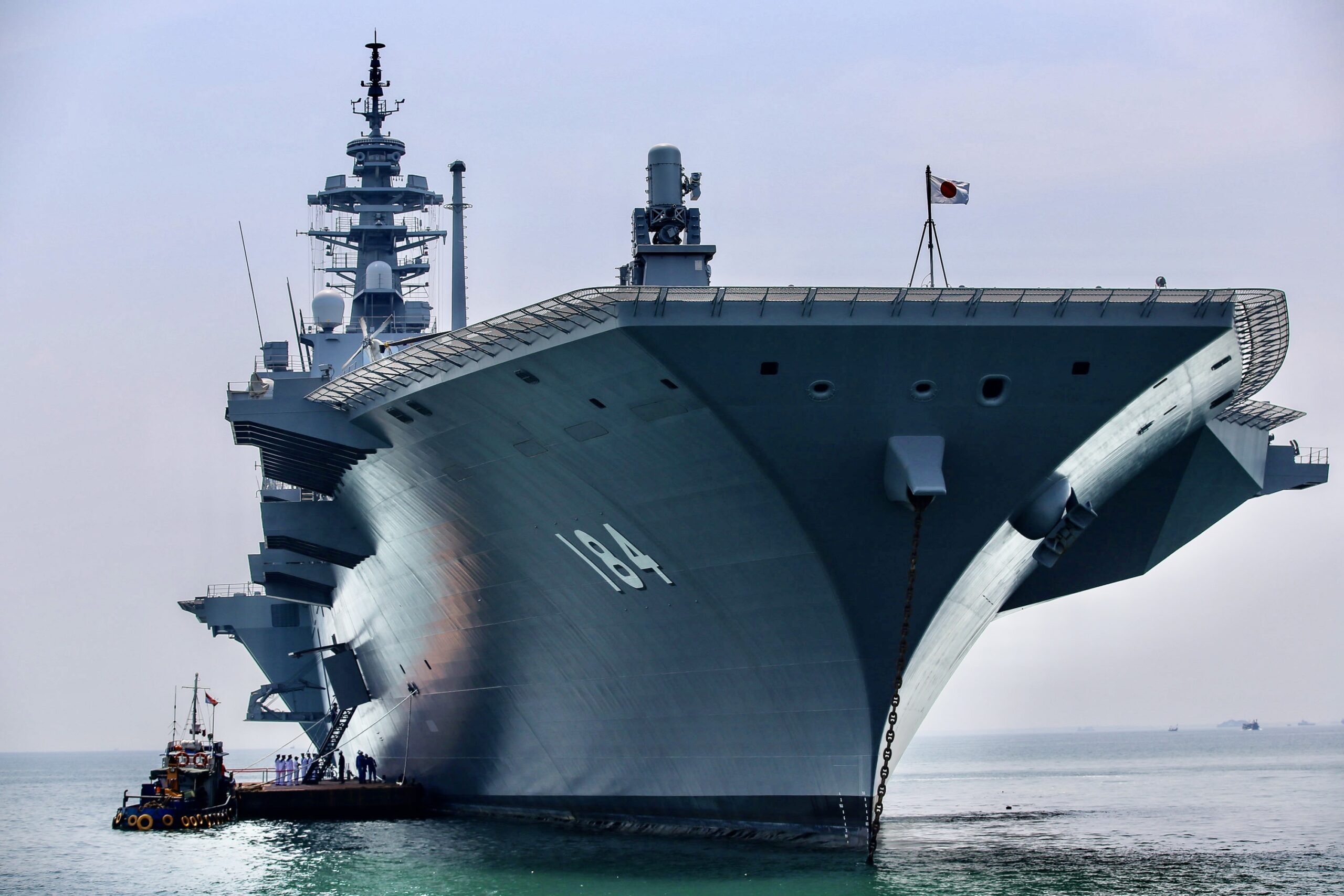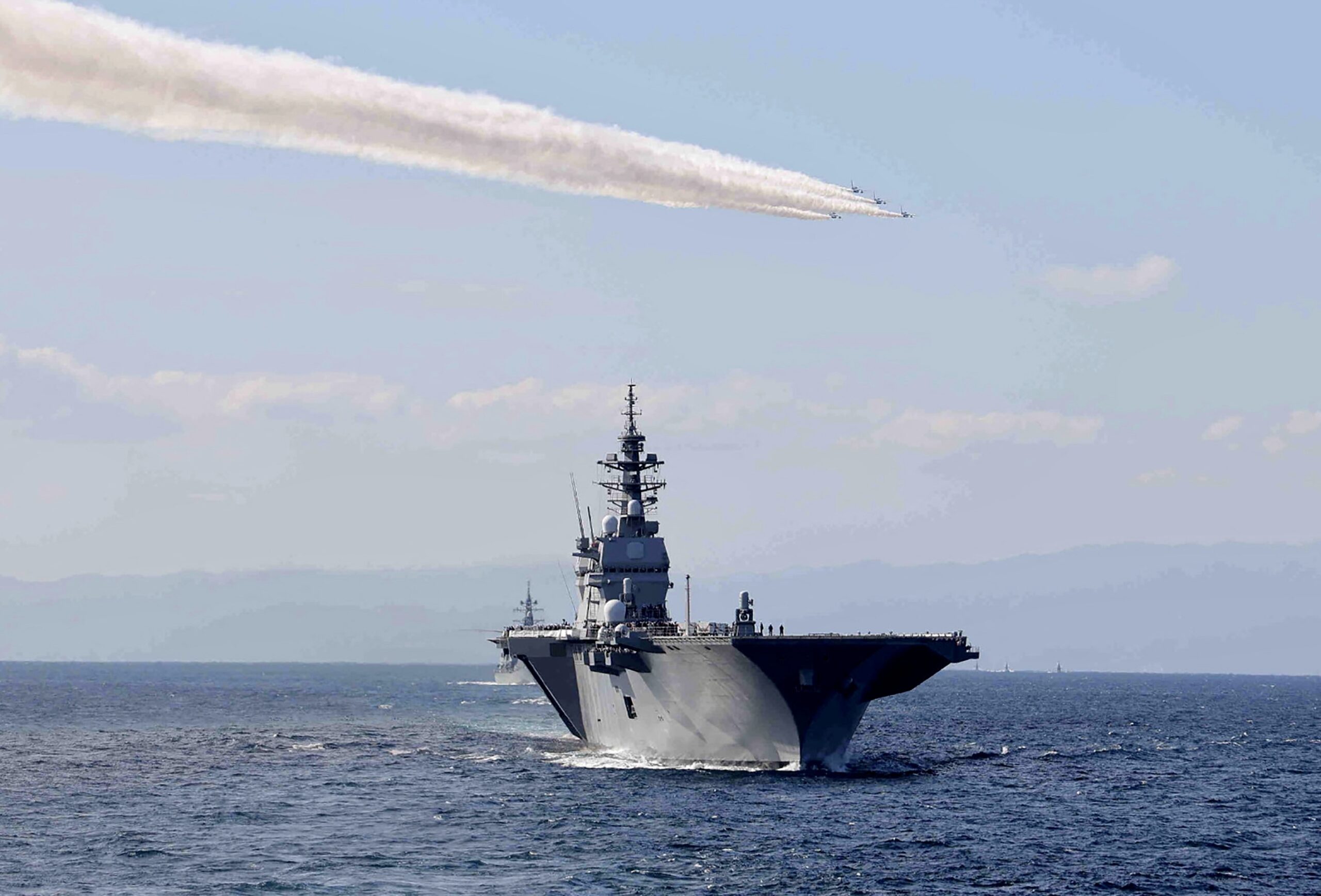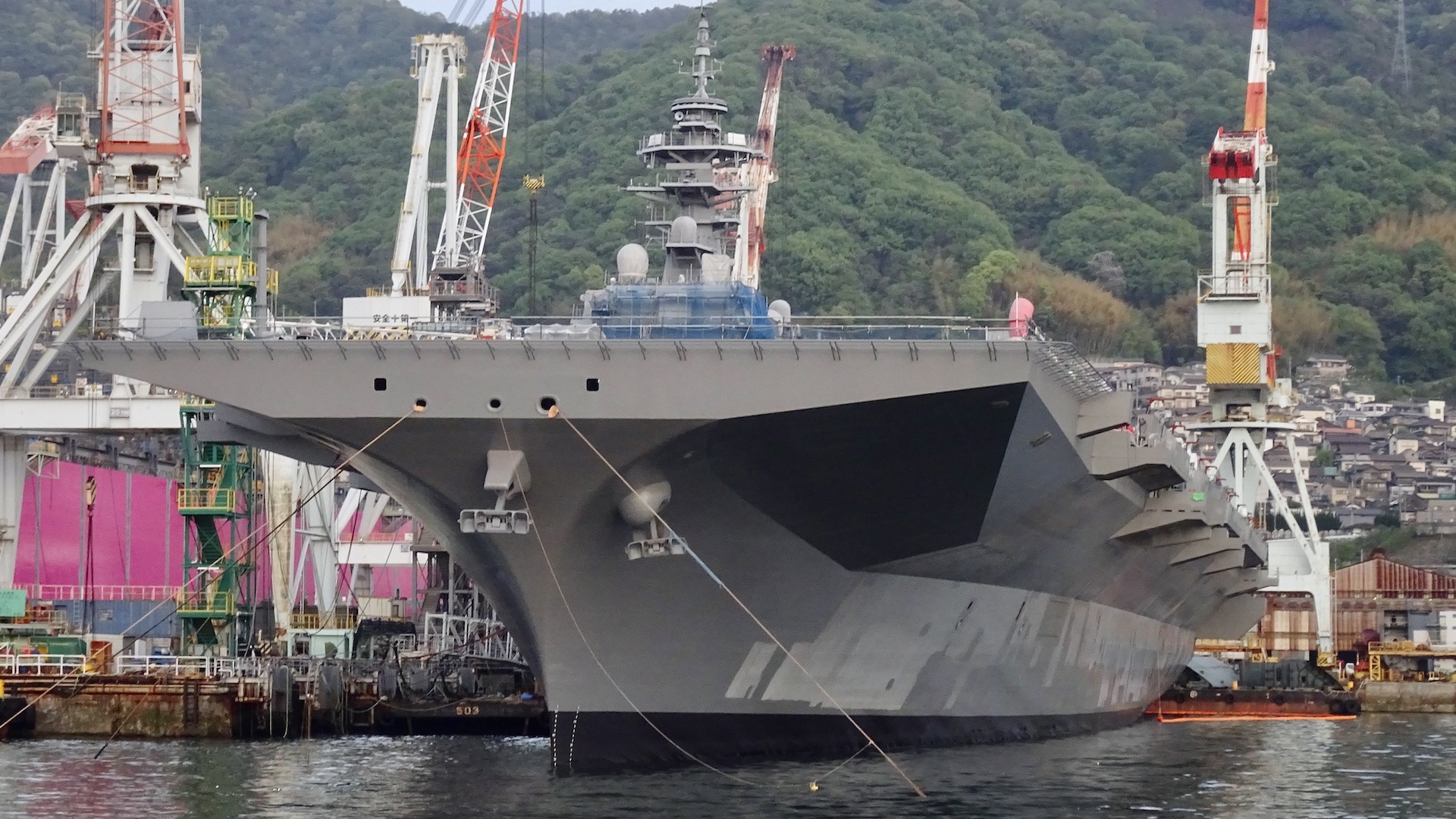New images show the heavily modified bow of Japan’s Izumo class JS Kaga (DDH-184) ‘helicopter-carrying destroyer’ as the vessel left its dock recently. Kaga is currently being turned into an F-35B Joint Strike Fighter carrier for the Japan Maritime Self-Defense Force (JMSDF).
Photos of the vessel pulling away from its dock in Kure City, Hiroshima Prefecture accompanied by various tugboats began circulating online around April 19. According to Naval News, the first set of modifications to Kaga (originally slated to end in March) included changing the shape of the vessel’s bow section and applying a heat-resistant coating to its deck. The next set of modifications, which will involve re-balancing and structurally reinforcing Kaga’s hull, are expected to be completed by March 2024.
Overall, work on turning Kaga into an F-35B carrier is expected to continue until early 2027, USNI News states. JS Kaga was originally launched in 2015 and commissioned in 2017.
The images above, along with ones taken earlier in April this year and from late 2022, reveal that the ship’s bow has radically changed. It looks to be significantly wider, owing to its optimization for the short takeoff and landing (STOL) capable F-35B. Moreover, the Phalanx 20mm close-in weapon system (CIWS) previously seen to the front of the vessel has also been removed, likely to help accommodate F-35Bs taking off and to provide more deck space for flight operations. Earlier images also show what appear to be white tent-like structures pitched on the vessel’s deck, which would be connected to other ongoing modifications being made.
Back in 2018, the Japanese government decided to modify its two Izumo class carriers to allow them to operate F-35Bs. As The War Zone previously argued, these ambitions were long-harbored despite public statements to the contrary by Japanese officials.

The modification work for both ships is split into two phases. As Naval News highlights, the first-in-class JS Izumo,completed its first phase modifications back in 2021. So far the ship, which was commissioned in 2015, has received a heat-resistant flight deck to cope with the F-35B’s exhaust, alongside alterations to the lighting and deck markings. The second phase of modifications, set to begin in March 2025, will see Izumo reconfigured with a squared-off flight deck, now sported by Kaga. Modifications on Izumo are also set to wrap up by 2027. Recently, Raytheon announced that it would be delivering the Joint Precision Approach and Landing System, or JPALS, to Izumo – providing guidance in all weather and surface conditions for F-35B aircraft, which have JPALS integrated.

As The War Zone reported at the time, Izumo has already performed proof of concept tests with U.S. Marine Corps F-35B jets. During these trials, which occurred in late 2021, USMC F-35Bs undertook very short takeoffs, owing to the vessel’s unmodified flight deck.

As the tests with USMC F-35Bs suggest, modifications to the Izumo class vessels are being made that could also increase interoperability with Japan’s allies using F-35B aircraft. This not only includes the U.S. but potentially extends to Singapore. Like Japan, South Korea had previously planned to convert its Dokdo class amphibious assault ship – classified as landing platform helicopters (LPH) – into F-35B carriers. More recent funding cuts in favor of submarine procurement have thrown those plans into doubt, however, as well as that country’s commitment to procuring F-35Bs.
Moreover, Tokyo has also chosen to adapt its Izumo class vessels due to its future commitment to the F-35B. According to Lockheed Martin, the Japan Air Self-Defense Force, or JASDF, has an established program of record of 147 F-35 Aircraft – consisting of 105 F-35A Joint Strike Fighters and up to 42 F-35B models. The JASDF F-35Bs, which Japan has yet to take delivery of, will equip the Izumo class vessels.
These and other changes in Japan’s naval priorities – as well as Japan’s recent commitment to increased defense spending – come amid broader tensions in relation to China’s growing naval capabilities of late. As The War Zone has previously indicated, Japan has a particular stake in protecting the disputed Senkaku Islands in the East China Sea. The islands would likely prove to be vulnerable during a potential conflict, and their protection could benefit from F-35Bs launched from Izumo class carriers. China’s own carrier fleet has also been growing in recent years. The country launched its Type 003 aircraft carrier in 2022 and its first Type 075 landing helicopter dock amphibious assault ship in 2019.
Maybe more than anything else, the conversion of these vessels into true carriers is emblematic of Japan’s shift from upholding a strictly defensive military posture to one that includes power projection and all the geopolitical changes that come with it.
Contact the author: oliver@thewarzone.com
